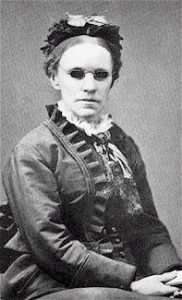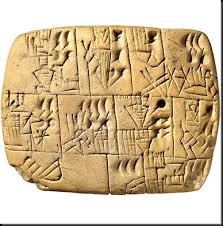(Beginning a series of posts about how church music ain’t what it used to be and what’s maybe not-so-great about that)
A Tuneful History
Picture America in the Year of Our Lord 1801.
What began as thirteen colonies is now fifteen “United States.” The nation is twenty-four years old, its Constitution has been in effect for a little over ten years. Thomas Jefferson is president, and before the end of his first term he will double the territorial size of the United States by negotiating the Louisiana Purchase. But even before they had a legal right to, Americans were moving westward, forming settlements and establishing towns. Every town had at least one church, and soon three or four.
 It was the same in the towns they came from: church was the heartbeat of every community, where births were recorded, marriages performed, and funerals preached. The building with the steeple also served as an assembly hall for political and social gatherings, such as the weekly “sing.” Almost everyone sang, for worship and for fun, both secular and sacred, Sundays and Wednesdays and days in between.
It was the same in the towns they came from: church was the heartbeat of every community, where births were recorded, marriages performed, and funerals preached. The building with the steeple also served as an assembly hall for political and social gatherings, such as the weekly “sing.” Almost everyone sang, for worship and for fun, both secular and sacred, Sundays and Wednesdays and days in between.
In the scattered communities springing up all over the west, many churches didn’t have a pianist to accompany their singing, and often they didn’t have a piano. (Pianos are notoriously hard to transport, especially over the mountains.) Aside from the occasional fiddle or fife, the human voice was the only instrument available. But along with their cookware and bags of meal, settlers carried with them a system of singing introduced by a book called The Easy Instructor, published in Boston in 1801. This is the first published resource for what came to be called “shape-note singing.”
The basic idea is to assign a distinctive shape to each pitch on the do-re-mi scale. Singers who could not read music (that is, recognize pitches by the notes’ position on a five-line staff) would locate pitch by the shape. There’s more than one shape-note system, but this one is standard:

Shape-note singing began in New England but went west with the pioneers and found a permanent home in the south. To get a taste of it, search YouTube for “shape-note singing” and choose among the many associations and clubs (and even churches) that still practice it. The style is loud, brassy, somewhat harsh and not like anything else. It’s not to everyone’s taste, but it’s a link to our past that we can still hear.
So are traditional hymns and psalters, and like shape-note singing, the contemporary church may be close to leaving them behind for good.
* * * * * * * * * * *
A personal recollection: I grew up in the non-instrumental Church of Christ, singing out of a shape-note hymnbook. Church was the pivot of every week: Sunday morning, Sunday evening, and Wednesday night, we were there. At every Sunday service, morning and evening, the pattern was the same—three songs before the sermon, an invitation song after the sermon, a song of meditation before the Lord’s super, and a song of dismissal. On Wednesdays, a devotional service after classes, with two songs, a brief message, an invitation, and a dismissal.
That was a lot of singing!
The first thing visitors noticed when worship started was the absence of a piano, organ, or choir. And the second thing visitors noticed was the power of the singing, especially in an assembly of 100 or more. The harsh, clanging chords of traditional shape-note singing had smoothed out somewhat, but echoes of it lingered, as they do even today. Life-long members of the Church of Christ had sung a cappella from childhood. You heard the parts. More importantly, you heard the voices.
And you heard some good songs. Some cheesy, slap-happy, or spooky ones, too—I remember one about the “All-seeing eye watching you”—but we also sang “My Hope is Built on Nothing Less” and “Abide with Me” and “Rock of Ages”—time-tested classics with sound theology. Those words sank deep within my consciousness, to be recalled later with waves of meaning and emotion. I will always be grateful for this: the melodies and lyrics I never forgot.
In 1970 I enrolled at Abilene Christian College, where a fresh wind was blowing. Nobody wanted to sing those stodgy old hymns anymore: we were singin’ and swayin’ to “My Sweet Lord” by George Harrison and “O Happy Day” as recorded by the Edwin Hawkins Singers. And how about Jesus Christ Superstar? That blew us away! “I Don’t Know How to Love Him”—remember?
You don’t?
In the late seventies my husband and I attended a house church where we sang slow, meditative Psalm  adaptations to basic chords strummed on a guitar. We loved “Day by Day” and “Prepare the Way of the Lord” (from the musical Godspell) and songs about fellowship and community. “They’ll Know We Are Christians by Our Love”—can you hear that one in your head right now?
adaptations to basic chords strummed on a guitar. We loved “Day by Day” and “Prepare the Way of the Lord” (from the musical Godspell) and songs about fellowship and community. “They’ll Know We Are Christians by Our Love”—can you hear that one in your head right now?
You can’t?
In the late eighties we joined a startup Orthodox Presbyterian Church that met in a school cafeteria. Most of the other members were of our own age. At that time the church could not afford hymn books, so the music director inserted praise choruses (mostly Psalm-based) among the classic hymns that were printed in each week’s bulletin. At one informal Sunday evening service, one of the brothers brought a guitar and suggested we sing some of the good old classics that we’d sung in the sixties.
No one knew any of them.
What’s my point? That every new generation of Christians now seems to be developing its own songbook and the songs usually don’t outlast that generation. In fact, since they’re not printed on paper but shown on a screen, they might not even outlast this generation. The meditative quality of the words (enhanced by repetition) and the random pattern of the music make some of them as forgettable as a movie soundtrack.
Movie soundtracks are for producing a mood, and certainly it’s important to calm our hearts and shut out worldly concerns when we come together to worship God. And yet, according to the Scriptures, that’s not entirely what our singing is for. According to the Scriptures, our songs are addressed not only to God, but also to each other (Eph. 5:18-21). They are for teaching, admonishing, correcting, and encouraging, drawing us all together with one voice as we offer our sacrifices of praise.
There’s no need to pitch the new songs. But there’s also no need to pitch the old ones either: in fact, we might be carelessly tossing out a priceless heritage our children and grandchildren will never get back. I believe there are good reasons not to do that . . .
Next week: Why Let It All Go?
 and preaching the word to everyone who walked through his door. That’s a strange ending, until we realize it’s not really an ending at all. The story goes on, and we’re in it. But with Revelation, a notoriously frustrating book for many readers, we get a divine view of the heavens and the earth that God created in Genesis 1:1. Terrible, glorious, frightening, and encouraging events unfold as the curtain rings down on this present age.
and preaching the word to everyone who walked through his door. That’s a strange ending, until we realize it’s not really an ending at all. The story goes on, and we’re in it. But with Revelation, a notoriously frustrating book for many readers, we get a divine view of the heavens and the earth that God created in Genesis 1:1. Terrible, glorious, frightening, and encouraging events unfold as the curtain rings down on this present age.





 past to encourage us. Though they are dead, yet they speak (see Hebrews 11:4). We can’t hear George Whitefield or Charles Spurgeon or Jonathan Edwards preach, but we can hear Charles Wesley, John Newton, and Martin Luther through the songs they wrote. Singing connects us to the flow of church history and the work of the Holy Spirit in every age. We don’t just hear about that history—we hear it, in the songs we sing.
past to encourage us. Though they are dead, yet they speak (see Hebrews 11:4). We can’t hear George Whitefield or Charles Spurgeon or Jonathan Edwards preach, but we can hear Charles Wesley, John Newton, and Martin Luther through the songs they wrote. Singing connects us to the flow of church history and the work of the Holy Spirit in every age. We don’t just hear about that history—we hear it, in the songs we sing.



 It was the same in the towns they came from: church was the heartbeat of every community, where births were recorded, marriages performed, and funerals preached. The building with the steeple also served as an assembly hall for political and social gatherings, such as the weekly “sing.” Almost everyone sang, for worship and for fun, both secular and sacred, Sundays and Wednesdays and days in between.
It was the same in the towns they came from: church was the heartbeat of every community, where births were recorded, marriages performed, and funerals preached. The building with the steeple also served as an assembly hall for political and social gatherings, such as the weekly “sing.” Almost everyone sang, for worship and for fun, both secular and sacred, Sundays and Wednesdays and days in between.
 adaptations to basic chords strummed on a guitar. We loved “Day by Day” and “Prepare the Way of the Lord” (from the musical Godspell) and songs about fellowship and community. “They’ll Know We Are Christians by Our Love”—can you hear that one in your head right now?
adaptations to basic chords strummed on a guitar. We loved “Day by Day” and “Prepare the Way of the Lord” (from the musical Godspell) and songs about fellowship and community. “They’ll Know We Are Christians by Our Love”—can you hear that one in your head right now?



